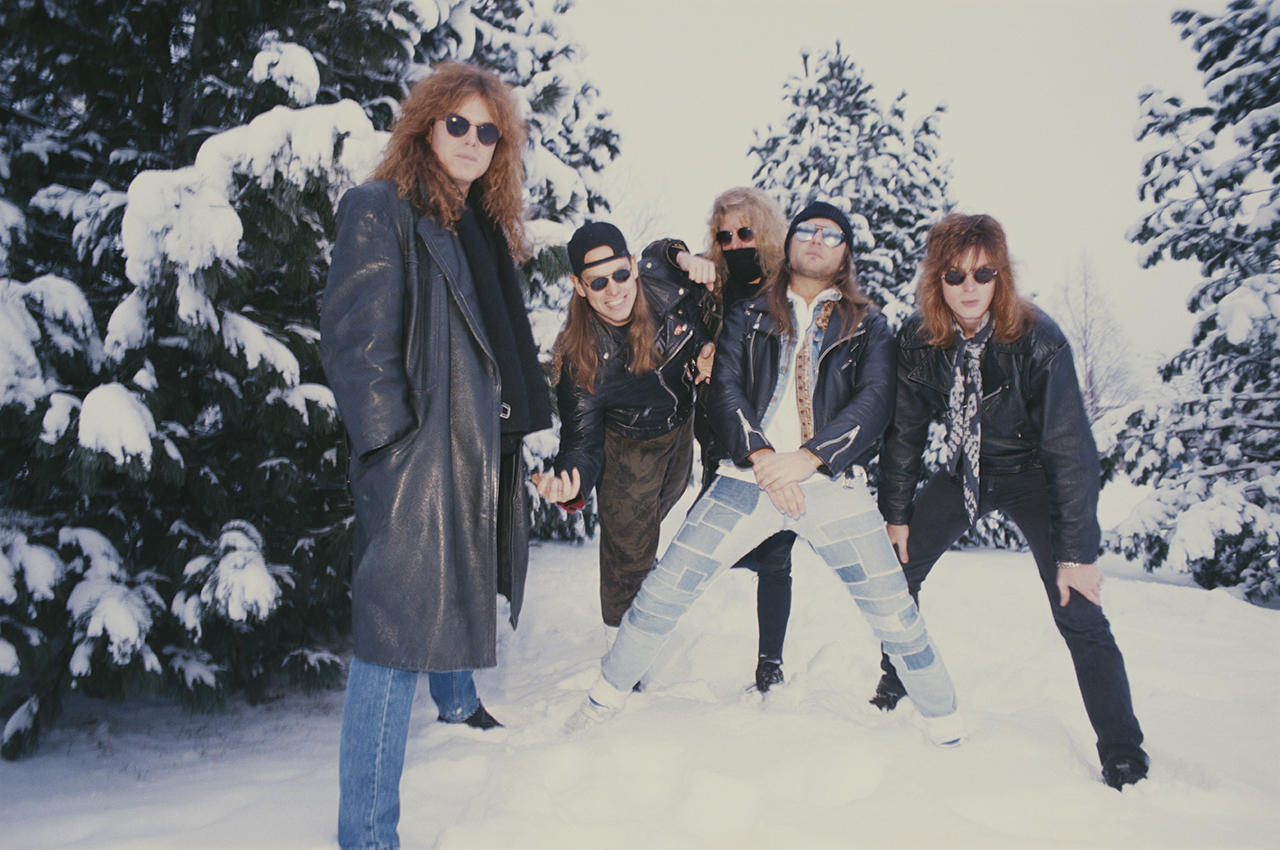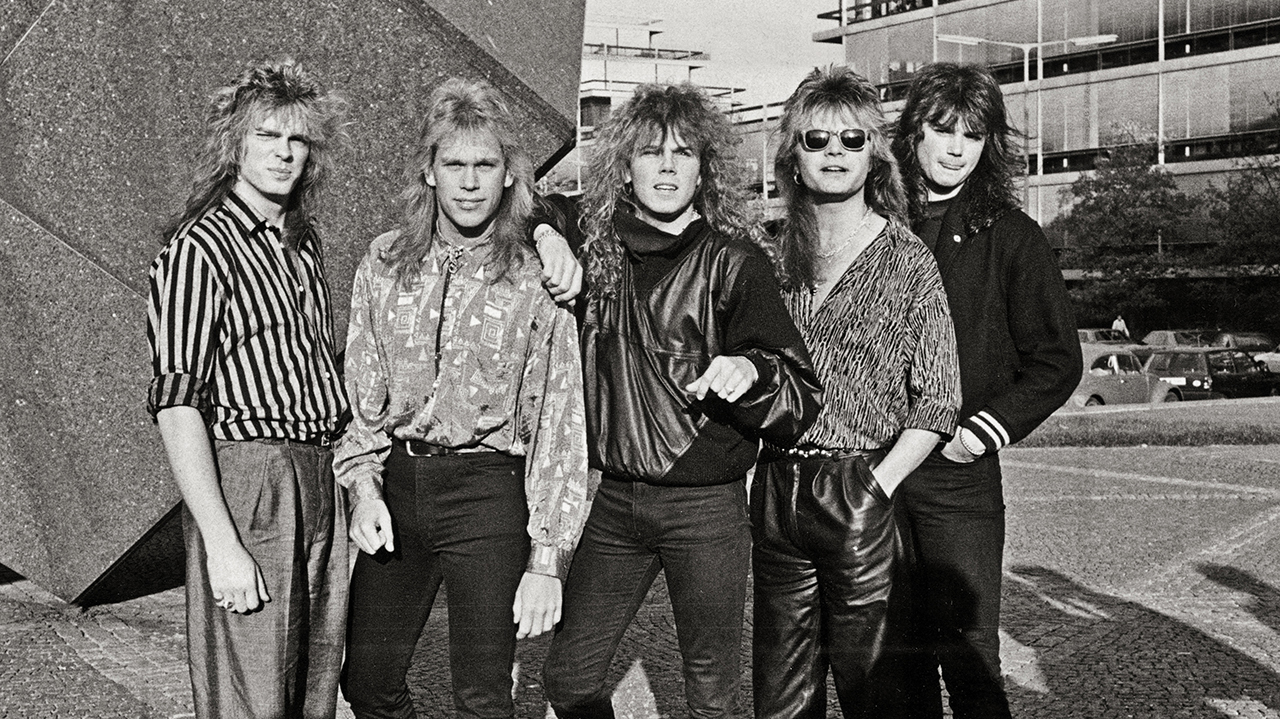It’s among the most celebrated run of notes in popular music – so ubiquitous that the Queen could most likely hum it upon request. Its video is amongst the biggest of all time.
The title track of Europe’s third album turned 30 years old in 2016, but The Final Countdown’s simple keyboard riff dates back to Joakim Larsson’s student days in Stockholm – possibly even before he adopted the name Joey Tempest.
“I was still at college back then. And there was a guy I knew called Mic Michaeli who was in a band called Avalon,” the singer recalls. “I walked up to him one day and asked whether I could borrow his keyboard. Mic must have thought I was a complete loony, but he said yes.”
Much further down the line, Michaeli would take over from Tempest as Europe’s full-time keyboard player.
It was while fooling around with the borrowed Korg PolySix that Tempest stumbled upon a sweeping sound that became the song’s lengthy intro. For a while the untitled snippet went undeveloped. “I knew it had something, but I couldn’t write a song around it,” Tempest says now. And then a stroke of good fortune came along. Europe’s management office was directly opposite a nightclub that the band often went to.
“Our manager suggested letting them play my one-minute piece, accompanied by their laser show – just for fun,” Tempest says. “At the bar, John Levén [bassist] and I started talking about how we could take things further.”
Inspired by his love of UFO, Tempest laid down its galloping beat with the help of a drum machine, and after the word ‘countdown’ popped into his head wrote a set of lyrics that mention of ‘leaving together’ and ‘heading for Venus’. “After that it all came together quite quickly,” he says. “The voice stays in one monotonous line throughout, with the chords moving underneath. Only later in life did I realise that’s how many classical composers work. It’s hypnotic and quite cool.”
But despite being presented to his bandmates, the song – still a cumbersome six-and-a-half minutes long – was left off Europe’s first two albums. “We were a guitar band… it was something very unusual for us,” Tempest explains.
Finally, Europe decided that it was time to, in Tempest’s words, “stick our head above the parapet and do something a little different”. In the studio, with John Norum attempting to channel Deep Purple’s Lazy in his guitar solo, the band vetoed Journey producer Kevin Elson’s suggestion of ditching its intentionally British-style beat for an American-sounding one – more of a four-on-the-floor thing.
- Thinking Out Loud: Joey Tempest
- Europe confirm Final Countdown 30th anniversary tour
- Joey Tempest's Top 10 Europe Songs That Aren't The Final Countdown
- The Top 10 Essential 80s AOR Albums
“For a day the song was actually called The Final Breakdown,” Tempest says with a laugh. “But in the end we thought the original choice and title were best because that rhythm made you want to jump up and down.”
A few years ago, talking about The Final Countdown, John Norum told Classic Rock: “When I first heard that synth intro my reaction was: ‘No, this is nuts. We just can’t use this.’ Thank God they didn’t listen to me.”
Tempest insists now that the commonly held perception of the song causing Norum to quit the band is an over-simplification, explaining: “John’s real problem was with Kevin Elson’s radio mix, which turned up the keyboards and vocals and minimalised the guitar.”
However, nobody within Europe’s organisation was prepared for the success that the song brought, topping the singles charts in 25 countries and almost overnight castrating any kind of credibility that the band might have accrued as a rock band. In his early 20s, with poodle-coiffure pretty-boy looks, Tempest found the pop magazines pitting him against the pearly-toothed Jon Bon Jovi, whose singles Livin’ On A Prayer and You Give Love A Bad Name were also riding high in the charts on both sides of the Atlantic.
“I enjoyed [the teenie stardom] for what it was, but the two Johns very quickly began to hate doing TV shows that wanted us to mime,” Tempest recalls. “And that sense of awkwardness for a band that worshipped Deep Purple, Thin Lizzy, Rainbow and UFO became a really big problem – especially for John Norum.”

It all was too much for Norum who, perhaps sensing Europe’s imminent enormity, resigned just before the album was released.
With Kee Marcello in as his replacement, Europe would work with producer Ron Nevison on their follow-up, Out Of This World, pulling out all the stops with tracks such as Let The Good Times Rock. But even the producer’s excellent credentials they couldn’t convince the vast percentage of the public what the real Europe were about. After a fifth album, Prisoners In Paradise, the band went on hiatus in 1992. Norum stepped back in for a reunion in Stockholm on New Year’s Eve of 1999, and that became permanent almost five years later.
A toughening up of their sound brought the reconvened Europe a nomination for Album Of The Year with Last Look At End at 2009’s Classic Rock Awards, and in 2015 they won Comeback Of The Year, suggesting that the credibility that eluded them during the late 80s had perhaps finally been achieved.
In The Final Countdown’s 30th anniversary year, Europe having heavied up the delivery a little from the original arrangement, and Tempest insists that all the band still enjoy playing it on stage.
“I love looking out at all the smiling faces when then that intro kicks in,” he says proudly. “In all four corners of the world I’m often told that it’s a bucket-list moment for fans who never saw us play it before. And that’s a very special thing for a musician to hear.”

